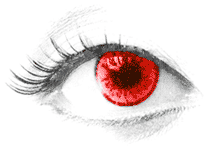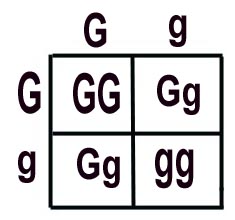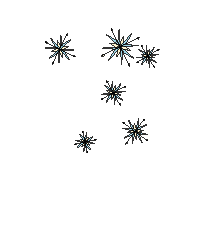|
|
 |
|
GENETICS
Chapter 11

|
| |
|
|
Use of our material:
We have worked very hard on Powerpoints/games/worksheets, etc to make this a
resource for our students. If you are using our materials, please give us credit
for our efforts by listing us as a source with links to our site.
Any questions, comments, or
corrections can be directed to us at

REVIEW GAMES
Sources:
Eye color: http://sps.k12.ar.us/massengale/genetics%20tutorial.htm
Punnett square by Riedell
Mrs.
Riedell's Homework Calendar
| MONDAY
12/1 |
TUESDAY
12/2 |
WEDNESDAY
12/3 |
THURSDAY
12/4 |
FRIDAY
12/5 |
|
|
|
|
MITOSIS
TEST
HW: Genetics vocab
due TUES |
Midterm
grades are DUE
What genes do I
have?
Start Genetics
slide show
HW: Genetics
vocab due TUES
|
| MONDAY
12/8 |
TUESDAY
12/9 |
WEDNESDAY
12/10 |
THURSDAY
12/11 |
FRIDAY
12/12 |
Finish Slide show
Class time to work on Punnett #1HW: Genetics
vocab due THURS
Finish up to page 3 in Punnett #1 |
Punnett #1 HW: Vocab due Thurs
|
Punnett #1
HW: Vocab quiz TOMORROW |
VOCAB DUE
Punnett #1 due at end of class
More practice
HW: Wuggygumbles Punnett due MON |
More practice
HW: Wuggygumples Punnetts due MON |
| MONDAY
12/15 |
TUESDAY
12/16 |
WEDNESDAY
12/17 |
THURSDAY
12/18 |
FRIDAY
12/19 |
|
SNOW DAY

HW: Study for test
THURS |
Punnett #2 DUE
Blood typesBlood type punnetts
HW: Blood type Punnetts
Study
for test THURS |
Blood type Punnetts DUE
REVIEW
HW:
Study
for test THURS |
GENETICS
TEST |
Early out at NOON |
LIFE SCIENCE STANDARDS
Indicator 1: Understand the
fundamental structures, functions, classifications, and mechanisms found in
living things.
|
Bloom’s Taxonomy Level |
Standard, Supporting
Skills, and Examples |
|
(Analysis) |
9-12.L.1.1.
Students are able to relate cellular functions and processes to
specialized structures within cells.
-
Storage and transfer of genetic information
|
Indicator 2: Analyze
various patterns and products of natural and induced biological change.
|
Bloom’s Taxonomy Level |
Standard, Supporting
Skills, and Examples |
|
(Application) |
9-12.L.2.1. Students
are able to predict inheritance patterns using a single allele.
- Solve problems
involving simple dominance, co-dominance, and sex-linked traits
using Punnett squares for F1 and F2
generations.
Examples: color blindness, wavy hair
- Discuss disorders
resulting from alteration of a single gene.
Example: hemophilia, cystic fibrosis |
|
(Synthesis) |
9-12.L.2.2. Students
are able to describe how genetic recombination, mutations, and natural
selection lead to adaptations, evolution, extinction, or the emergence
of new species.
Examples: environmental pressures, allele
variations, |
Indicator 3: Analyze how organisms are linked to one another and the
environment.
|
Bloom’s Taxonomy Level |
Standard, Supporting
Skills, and Examples |
|
(Synthesis) |
9-12.L.3.1A.
Students are able to relate genetic, instinct, and behavior patterns to
biodiversity and survival of species. (SYNTHESIS)
- Compare and
contrast learned behavior vs instinct.
Example: nature vs nurture |
ADVANCED HIGH SCHOOL LIFE SCIENCE
Standards, Supporting Skills, and Examples
Indicator 2: Analyze
various patterns and products of natural and induced biological change.
|
Bloom’s Taxonomy Level |
Standard, Supporting
Skills, and Examples |
|
(Synthesis) |
9-12.L.2.1A.
Students are able to predict the results of complex inheritance patterns
involving multiple alleles and genes. (SYNTHESIS)
Examples: human skin color, polygenic inheritance
·
Relate crossing over to genetic variation. |
NCLB Core High School Life Science Performance Descriptors
|
Advanced |
High
school students performing at the advanced level:
· predict
the function of a given structure;
· predict
how traits are transmitted from parents to offspring; |
|
Proficient |
High
school students performing at the proficient level:
· describe
the relationship between structure and function (cells, tissues, organs,
organ systems, and organisms);
· explain
how traits are transmitted from parents to offspring;
· predict
the impact of genetic changes in populations (mutation, natural
selection);
· predict
how life systems respond to changes in the environment; |
|
Basic |
High
school students performing at the basic level:
·
recognize that different structures perform different functions;
· identify
DNA as the structure that carries the genetic code;
·
identify
that genetic traits can be transmitted from parents to offspring; |
BACK TO TOP
HOME

Use of our material:
We have worked very hard on Powerpoints/games/worksheets, etc to make this a
resource for our students. If you are using our materials, please give us credit
for our efforts by listing us as a source with links to our site.
Any questions, comments, or
corrections can be directed to us at




